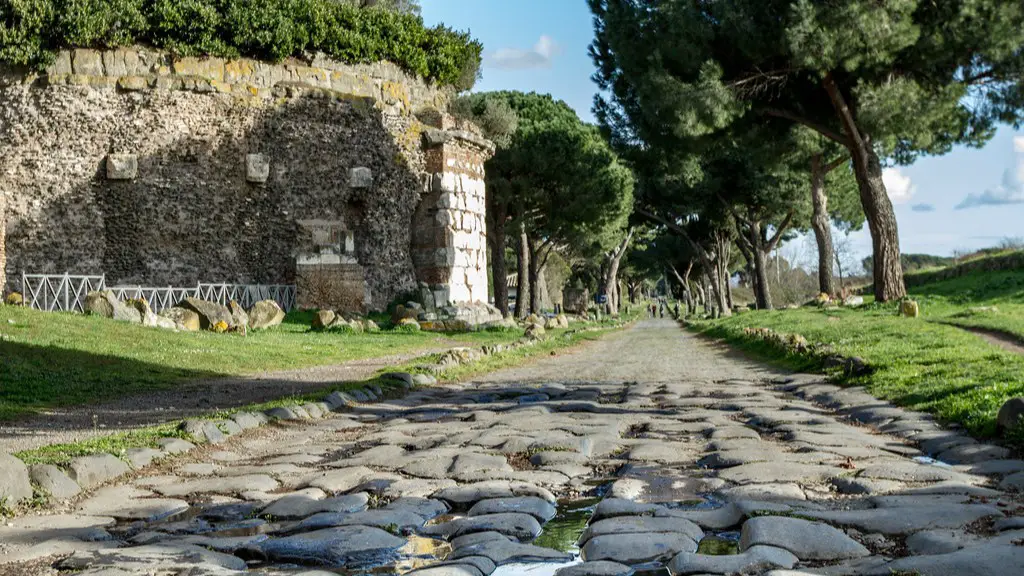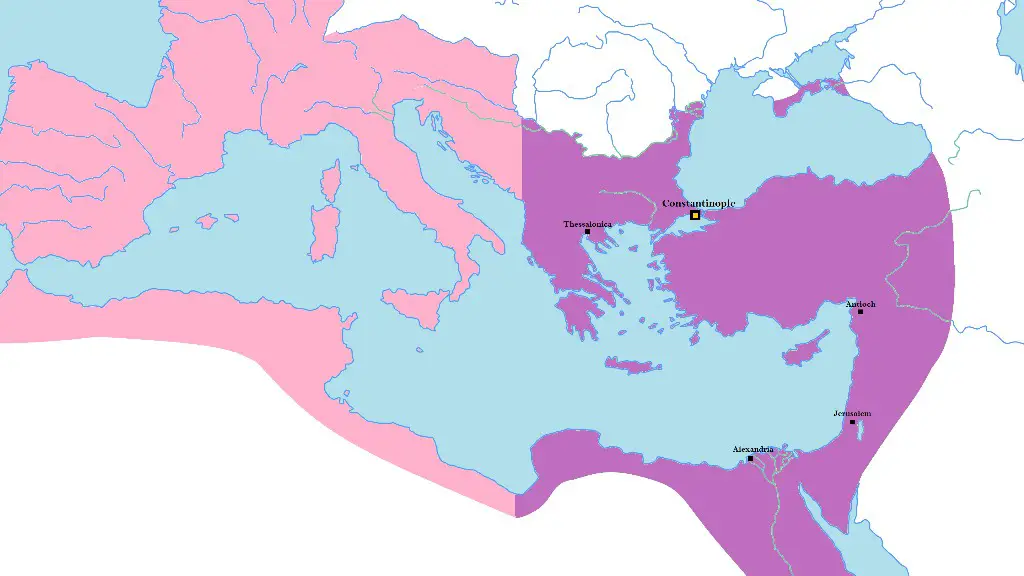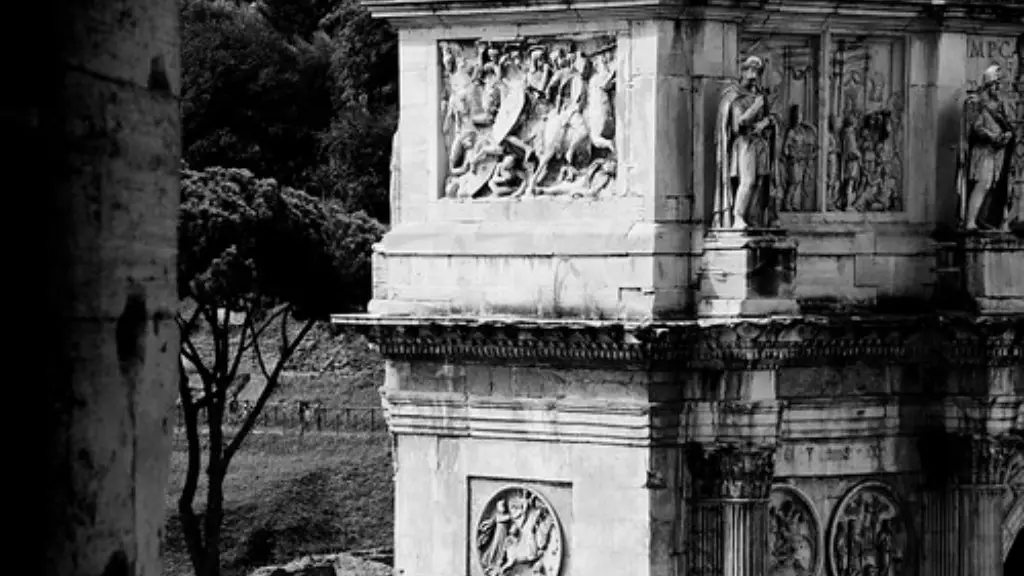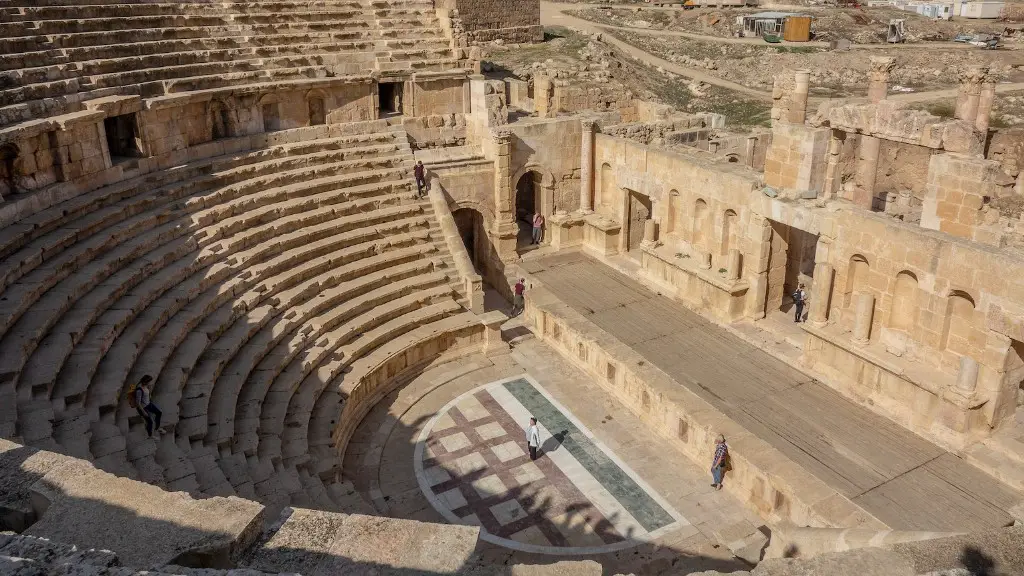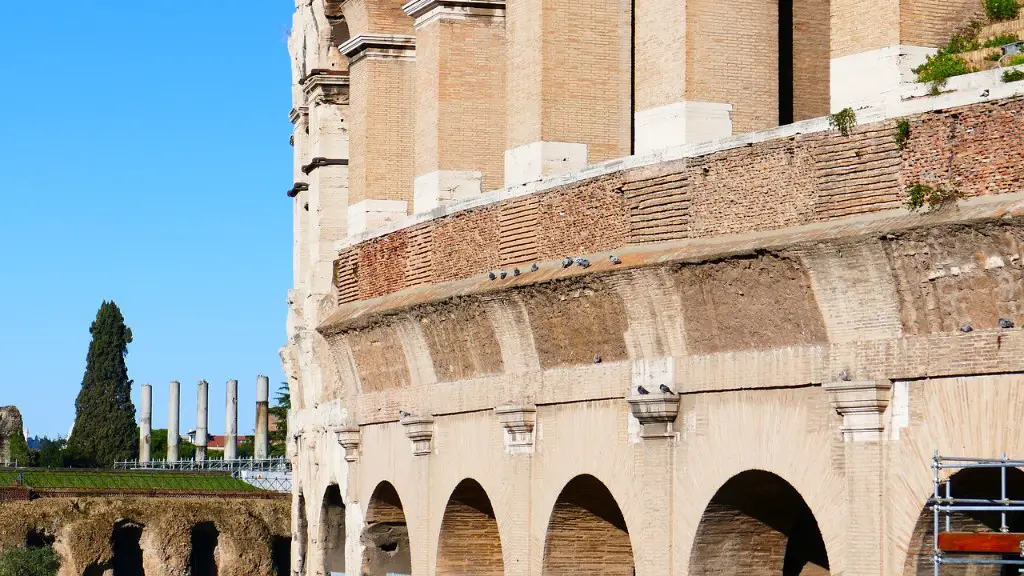Aqueducts were a key feature of Ancient Rome. They provided water for everything from drinking to washing, and they were so reliable and durable that they remained in use throughout the Roman Empire’s existence. Aqueducts are an impressive engineering feat, and understanding what they were used for in Ancient Rome helps to shed light on the technological, economic, and social accomplishments of that period.
To better understand what aqueducts were used for in Ancient Rome, it’s important to look at where they originated. Aqueducts originated in Mesopotamia and Egypt. In these places, gravity was used to build the canals, which created a consistent supply of water to irrigate lands, support industry, and provide a means of living for many people. The Romans adapted this technology and applied it to the challenges of urban life, creating an extensive network of aqueducts that spread across the Roman Empire.
Aqueducts were an essential part of the water-supply network in Rome. Water was collected from rivers and springs and transported via a network of conduits and covered channels. These were constructed of stone and brick, and were set into walls and arches. The conduit system was the most complex and technologically advanced part of the network. It was made of lead pipes that remained cool even in the hottest months.
The purpose of the aqueducts in Ancient Rome was to bring clean water to the public. Water was delivered to public fountains, private residences, and even public baths. The air in Rome was filled with the sound of running water at all times. It was even said that the sound was so loud, it could drown out the noise of chariots. The aqueducts also provided water for industrial uses, such as tanneries, mills, and breweries.
The construction of aqueducts was a massive undertaking. Roman engineers had to work in some of the most difficult and challenging terrains, and the aqueducts often ran for miles across rivers and marshlands. Construction of an aqueduct would take many years and required a great deal of skill and knowledge. The most impressive example of an aqueduct was the Aqua Claudia, which was constructed in the 1st century and ran for almost 100 miles from Subiaco to Rome. The aqueducts were also an important source of employment and expenditure, and they were the result of years of planning and hard work.
The aqueducts were an essential part of daily life in Ancient Rome, and their importance should not be underestimated. They provided vital services to citizens and enabled the city to grow and thrive. The construction of aqueducts was an impressive feat of engineering, and their legacy is still visible today in the cities and towns of the Roman Empire.
Effect of Aqueducts on Roman Culture
The aqueducts had a profound effect on Roman culture, as well. They provided a consistent supply of fresh water that enabled the growth and development of commerce, agriculture, and industry. This in turn led to the emergence of new social classes. Furthermore, the presence of running water could be heard throughout the streets and squares of the city, providing a peaceful and invigorating atmosphere. The water also served as an almost invisible link between the wealthy and the poor, as everyone could benefit from its supply.
The sight of the aqueducts also spoke to the grandeur and power of Rome, and their presence has inspired art, literature, and even architecture to this day. They provided a source of awe and wonder; a reminder of the greatness of the Roman Empire. In a very real sense, the aqueducts were a symbol of the Roman way of life.
Environmental Impact of Aqueducts
The environmental impact of the aqueducts cannot be overlooked. They revolutionized the use of water in the Roman world, greatly increasing the supply to the cities and reducing the demand on local water sources. This was especially true of the large urban centers, such as Rome and Constantinople. As a result, the vast majority of water was directed towards cities, leaving the rural areas with little to no access to fresh water.
Additionally, the construction of the aqueducts had an impact on local ecosystems. The destruction of wetlands and the disruption of water flow caused by the aqueducts could have a lasting impact. Furthermore, the water was often contaminated with pollutants, leading to numerous health problems, particularly in the lower classes.
Conclusion
The aqueducts of Ancient Rome played an essential role in the growth and success of the empire. They provided a reliable source of clean water for both public and industrial uses, and their construction and maintenance was a massive undertaking. The impact of the aqueducts can still be felt today, as they serve as a reminder of the engineering achievements of the Roman era. Furthermore, their presence had a transformative effect on culture and society, and their impact could be seen in both art and architecture.
Impact of Aqueducts on Roman Society
The construction of the aqueducts had a major impact on Roman society. In addition to providing a reliable source of water, they also served as a symbol of power and grandeur. The sight of the aqueducts was awe-inspiring and spoke to the greatness of the Roman way of life. Furthermore, the presence of running water helped to create a peaceful and calming atmosphere throughout the streets of the city.
The aqueducts also provided an economic boost, providing employment and expenditure to many different sectors. The construction of the aqueducts was a massive undertaking, and it required a great deal of skill and time. Furthermore, the presence of the aqueducts enabled the growth of industry, leading to greater opportunities for a range of social classes.
Legacy of Aqueducts in Modern Rome
The legacy of the aqueducts is still visible today in the cities and towns of the Roman Empire. Many of the aqueducts are still standing, albeit in ruins, and they are a constant reminder of the grandeur of the Roman Empire. However, the aqueducts also provided an invaluable service, providing a reliable source of clean water to the citizens of the empire. This had a major impact on public health and overall quality of life.
Today, the aqueducts are still being used in many parts of the world. Modern civilizations have adapted the technology to suit their own needs, but the aqueducts of Ancient Rome still serve as a vivid reminder of the ingenuity and engineering prowess of that period in history.
Julius Caesar and the Aqueducts
The aqueducts of Ancient Rome were built during the rule of Julius Caesar, who is credited with the construction of some of the most impressive aqueducts in the Roman Empire. He personally funded and oversaw the construction of the Aqua Claudia, which ran from Subiaco to Rome. He is also credited with the construction of the Aqua Virgo and Anio Novus, which supplied fresh water to the city of Rome.
The aqueducts were a major part of Caesar’s legacy and his keen interest in engineering. He was widely admired for his ambitious and often daring projects, and he even wrote about his accomplishments in his journals and letters. The aqueducts of Ancient Rome remain an impressive testament to the forward-thinking of Julius Caesar.
Health Benefits of Aqueducts
The aqueducts were also an important factor in promoting public health. The construction of aqueducts enabled the Roman Empire to increase its access to fresh, clean water, which in turn helped to improve overall public health. The availability of clean water enabled citizens to more effectively manage sanitation and waste management. Additionally, the aqueducts helped to reduce the risk of outbreaks of water-borne illnesses, as the water supply was purified and separated from sewage.
Moreover, the construction of the aqueducts was also a major factor in the development of public baths. These public baths were not only a place for bathing and leisure, but they also served as a place for social interaction and education. This was especially true for the poorer classes, who otherwise would not have had the means to access clean water.
Present State of Roman Aqueducts
The aqueducts of Ancient Rome are a living testament to the grandeur of the Roman Empire. Though many of them are now in ruins, they still stand as a reminder of the impressive engineering feats of that era. Furthermore, many of the aqueducts are still in use today, such as the Aqua Appia in Rome and the Canal de la Serpiente in Spain.
The presence of the aqueducts is also still felt in literature and art. They are a common motif in popular culture, and have served as an inspiration for a wide range of works. These works serve to remind us of the ingenuity, resourcefulness, and ambition of the Roman people.
